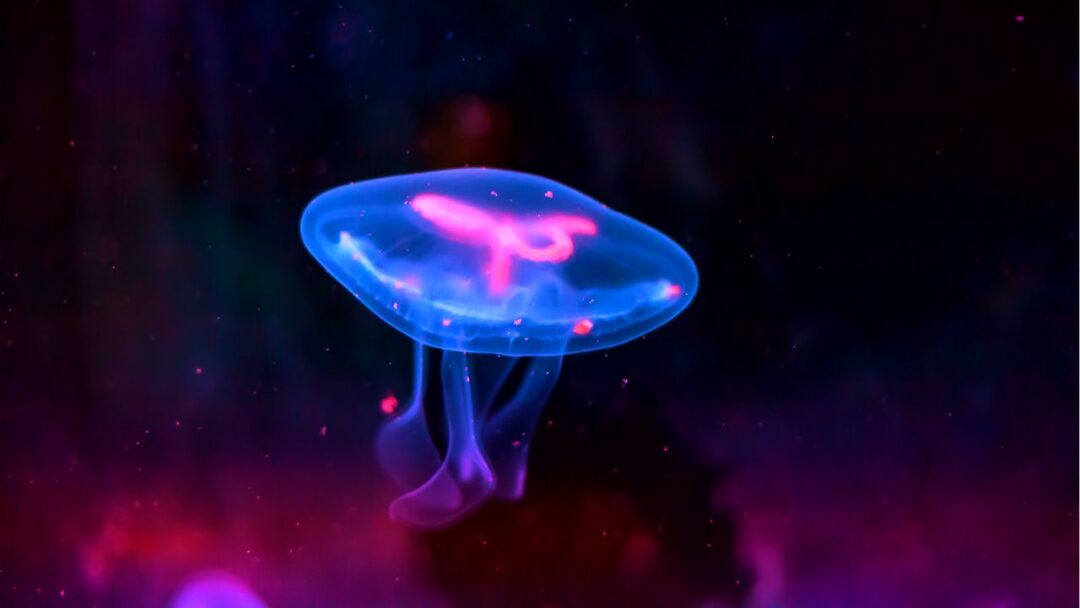Table of Contents

Introduction
Unveiling the Enigma: Exploring the Wonders of Bioluminescence in Nature. Certain organisms have an extraordinary ability that distinguishes them in the vast tapestry of the natural world; they emit a captivating, ethereal glow. For centuries, scientists and curious minds have been captivated by the mesmerizing phenomenon known as bioluminescence. Bioluminescence is a remarkable display of nature’s extraordinary diversity and adaptability, ranging from sparkling fireflies on a summer’s eve to shimmering deep-sea creatures in the deepest abyss.
We delve into the depths of this luminous world, guided by scientific inquiry and wonder, as we embark on a journey to unravel the mysteries of bioluminescence. We will investigate the mechanisms underlying this enchanting light, the astounding variety of organisms that harness it, and the ecological significance of bioluminescence.
I. The Origins of Bioluminescence
To comprehend bioluminescence, we must first investigate its evolutionary history. Organisms have independently developed this fascinating ability over time via various biochemical pathways. Bioluminescence has emerged as a multifaceted adaptation to survive and thrive in a variety of habitats, from bacteria and fungi to insects, fish, and even plants.
Scientists have discovered a diverse array of bioluminescent systems by unraveling the underlying mechanisms. Luciferase, a vital enzyme found in many bioluminescent organisms, is essential for light production. Researchers have shed light on the fundamental principles that govern bioluminescence by studying the genetic and biochemical complexities of these organisms.
II. The Enigmatic Light Show: Diversity in Nature
Nature’s creativity can be seen on display in the bioluminescent realm. Bioluminescent organisms range from flickering fireflies and glowing mushrooms to sparkling marine plankton and deep-sea anglerfish. Each species has evolved its own distinct method of producing and controlling light, resulting in striking patterns and colors.
We discover the secrets of bioluminescent marine life by diving to the ocean’s depths. We are awestruck by the mesmerizing light displays of dinoflagellates, comb jellies, and deep-sea creatures like the vampire squid. Bioluminescence is used by these organisms for a variety of purposes, including communication, attracting prey, camouflage, and mate selection.
III. Illuminating Ecology: Bioluminescence’s Significance
Aside from its aesthetic appeal, bioluminescence is important in ecological interactions and ecosystem functioning. Bioluminescent organisms influence predator-prey dynamics, species interactions, and even nutrient cycling by shedding light on the dark corners of nature.
For example, the mesmerizing glow of fireflies is a language of love and courtship, allowing individuals to find their mates in the darkness of the night. Bioluminescence is a powerful communication tool in marine environments, allowing organisms to navigate, attract mates, and defend against predators. Furthermore, some organisms use bioluminescence to deter or confuse their attackers, demonstrating nature’s multifaceted strategies.
IV. Bioluminescence in Scientific and Technological Advancements
The enigmatic light emitted by bioluminescent organisms has captivated scientists and inspired advances in a variety of fields. Researchers have used bioluminescence to develop novel imaging techniques such as bioluminescent imaging and biosensors. These tools have transformed biomedical research by allowing scientists to visualize and study biological processes with previously unheard-of precision.
Bioluminescence has also piqued the interest of biomimicry enthusiasts. Scientists and engineers are investigating novel lighting technologies, energy-efficient materials, and sustainable design concepts by drawing inspiration from nature’s light-producing organisms.
Frequently Asked Questions (FAQ)
What is bioluminescence?
The production and emission of light by living things is known as bioluminescence. It is a fascinating phenomenon that occurs naturally in a variety of organisms, including fungi, deep-sea creatures, and fireflies.
How does bioluminescence work?
A chemical reaction within specialized cells called photocytes or photophores causes bioluminescence. These cells contain luciferin, a light-emitting compound, as well as luciferase, an enzyme. Light is produced when luciferin interacts with luciferase and oxygen.
Why do organisms exhibit bioluminescence?
Depending on the organism, bioluminescence serves a variety of functions. It can be used to attract mates, communicate, hide from predators, or defend against them. Bioluminescence is also used by some organisms to attract prey or confuse predators.
Where can bioluminescent organisms be found?
Bioluminescent organisms can be found in a variety of environments, including the ocean, forests, caves, and even some terrestrial species such as fireflies. Glowing plankton in the ocean, bioluminescent mushrooms, and deep-sea creatures like anglerfish are some well-known examples.
How does bioluminescence help deep-sea organisms?
Bioluminescence aids organisms in communicating, finding mates, and navigating in the deep sea, where sunlight is scarce. Bioluminescence is used by some deep-sea creatures to attract prey or as a defense mechanism.
Are there any medical or scientific applications of bioluminescence?
Yes, there are numerous scientific and medical applications for bioluminescence. In research, it is used to investigate cellular processes, gene expression, and protein interactions. Bioluminescent imaging techniques can also be used to track diseases, monitor cell activity, and research genetic disorders.
Can bioluminescence be artificially replicated?
Bioluminescence has been replicated in the laboratory by scientists. Researchers created genetically modified organisms (GMOs) that can emit light by isolating and manipulating the genes responsible for bioluminescence. GMOs can be used in research, environmental monitoring, and even artistic displays.
Are there any dangers or risks associated with bioluminescent organisms?
Bioluminescent organisms are not generally harmful to humans. Some bioluminescent organisms, such as certain types of bacteria, can, however, cause infections if they enter the body. It is critical to handle them with caution and adhere to appropriate safety protocols.
Conclusion
We are left in awe of nature’s extraordinary abilities as we conclude our journey into the enchanting realm of bioluminescence. Bioluminescence has shed light not only on the dark corners of our planet, but also on the depths of our knowledge. The mysteries that surround this mesmerizing phenomenon continue to beckon scientists and explorers, urging them to discover the glowing world’s hidden secrets.
Bioluminescence is a testament to the wonders of evolution and adaptation, from the intricate biochemical pathways to the ecological significance and technological applications. As we travel, let us cherish and protect these luminous wonders that remind us of nature’s immense beauty and diversity.
The Fascinating Life Cycle of Butterflies : NEXT POST